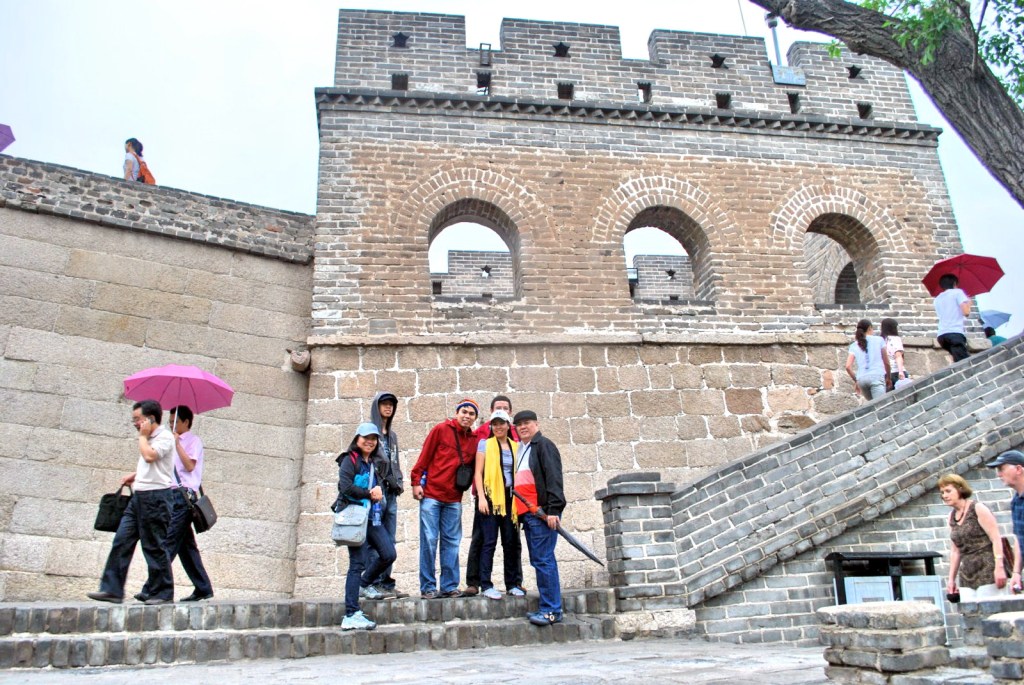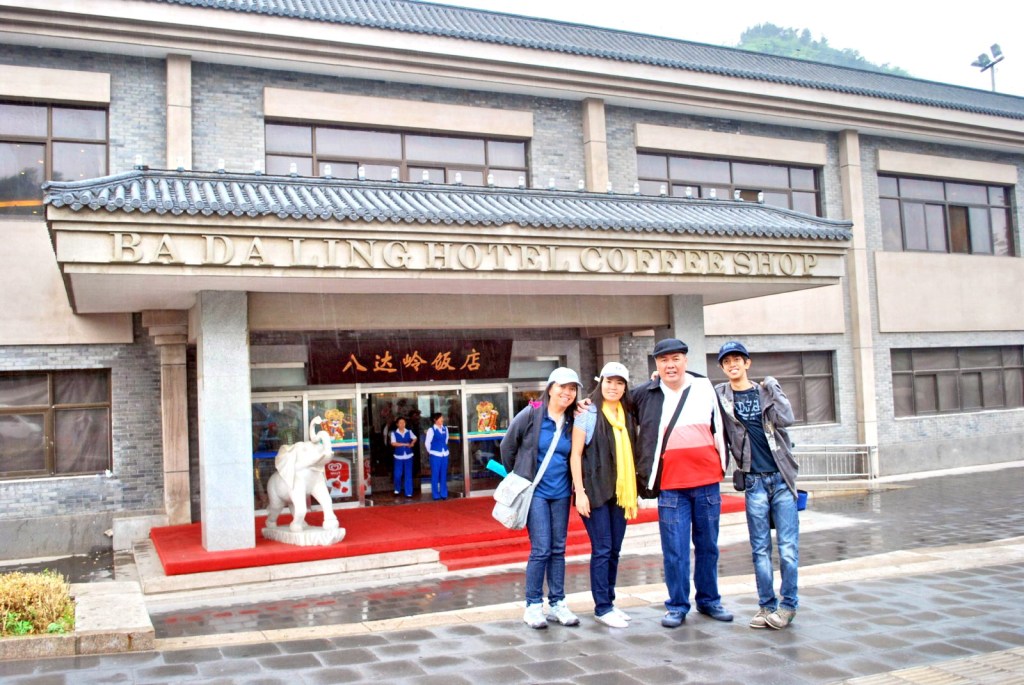After this short stopover at the Bona Jade Store, we all returned to our coach in anticipation of a great Great Wall tour. Then it started to rain. Upon arrival at the Badaling Great Wall, we found out that our cable car ride was cancelled, bad news for chubby Alex and his senior citizen mom. Carmen opted to stay behind while Alex gamely joined us. With the time allotted to us by our guide Brittany, we traversed the snaking portions of the wall as far as we could, donning our jackets for rain protection. Some of the sections were quite steep.
The entire Great Wall, with all of its branches, stretches for 8,851.8 kms. (5,500.3 miles), 6,259.6 kms. (3,889.5 miles) of which are sections of actual wall while the rest are 359.7 km (223.5 mi) of trenches and 2,232.5 kms. (1,387.2 miles) of natural defensive barriers such as hills and rivers.
The carefully restored, 4.8-km. long Badaling Great Wall, 70 kms. (42 miles) northwest of Beijing, one of 4 places that is accessible to tourist,is its most visited section (opened to tourists in 1957). On February 24, 1972, the late U.S. Pres. Richard M. Nixon and his wife, accompanied by Vice Premier Li Xiannian, visited this part of the wall during his historic visit to China. On the day of our visit it was filled with tourists, in spite of the rain. The immediate area around the Badaling Wall has a number of hotels, restaurants and a cable car.
The Great Wall of China, stretching from Shanhaiguan in the east to Lop Nur in the west, along an arc that roughly delineates the southern edge of Inner Mongolia, is a series of stone and earthen fortifications in northern China, built originally to protect the northern borders of the Chinese Empire against intrusions by various nomadic groups such as the Xiongnu from the north and rebuilt and maintained between the 5th century BC and the 16th century.
Since the 5th century BC, several walls have been built that were referred to as the Great Wall. One of the most famous is the wall built between 220–206 BC by the first Emperor of China, Qin Shi Huang. Little of that wall remains; the majority of the existing wall was built during the Ming Dynasty.
Prior to our return to our assembly area at Badaling Hotel, we took some time out to do some pasalubong shopping at a souvenir shop where I bought some marble letterhead stamps etched, on the spot, with the names of Jandy and my daughter Cheska, both in Chinese characters. I also bought a pair of granite tiles stippled with images of the Great Wall. Back at the Badaling Hotel, we had a late buffet lunch at its coffee shop. At the men’s comfort room, we were amused by life-size replicas of the terra cotta warriors of Xian.





